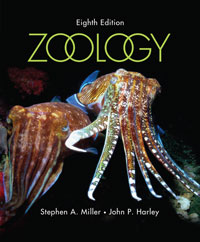1.
A) Platyhelminthes B) Rotifera C) Gastrotrichia D) Turbellaria 2.
A) bilateral symmetry B) a true mesoderm C) an excretory system D) nervous tissues 3.
A) parenchymal B) muscular C) nervous D) ectodermal 4.
A) Turbellaria B) Monogenea C) Trematoda D) Cestoidea 5.
A) Turbellaria B) Monogenea C) Nemertea D) Gastrotricha 6.
A) Gastrotricha B) Nemertea C) Monogenea D) Turbellaria 7.
A) Platyhelminthes B) Nemertea C) Cycliophora D) Aceolomorpha 8.
A) Platyhelminthes B) Nemertea C) Acoelomorpha D) Gastrotricha 9.
A) radial symmetry B) pentaradial symmetry C) asymmetry D) bilateral symmetry 10.
A) incomplete organization. B) complete organization. C) paedomorphosis. D) all of the above (a-c). 11.
A) usually flattened dorsoventrally. B) usually unsegmented worms. C) incomplete gut. D) many organ systems present. 12.
A) are carnivores. B) will also feed as herbivores. C) have chemoreceptors that help them detect food. D) all of the above (a-c). 13.
A) nephridiopore B) flame cell C) nephron D) excretory tube 14.
A) Muller's larva. B) planula larva. C) pncomiricidium. D) miricidium. 15.
A) have only one generation in their life cycle. B) have a life cycle where only one adult develops from one egg. C) are solely external parasites. D) both a and b. 16.
A) subclass Aspidogastrea. B) subclass Digenea. C) class Monogenea. D) class Cestoidea. 17.
A) Fasciola hepatica B) Schistosoma haematobium C) Schistosoma. mansoni D) Clonorchis sinensis 18.
A) Fasciola hepatica B) Schistosoma haematobium C) Schistosoma mansoni D) Clonorchis sinensis 19.
A) Eucestoda. B) Cestodaria. C) Cestoidea. D) Testudines. 20.
A) True B) False 21.
A) True B) False 22.
A) True B) False 23.
A) True B) False 24.
A) True B) False 25.
A) True B) False 26.
A) True B) False 27.
A) True B) False 28.
A) True B) False





